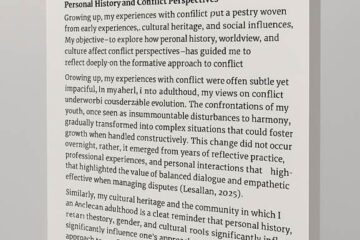Written by Lesallan – April 13, 2024
Ohio Christian University
BIB2025 New Testament Interpretation (ONLSP24)

The New Testament and the Story of Israel
The Second Temple period, spanning from the Persian era to AD 70, is a crucial time in Jewish history. The era known as the “400 Years of Silence” is a period characterized by the notable absence of prophets. However, it is essential to note that this phrase does not imply a lack of events or historical significance during this time. Instead, it conveys the belief held by some Jews that God did not communicate with His people through prophets during this time.
Understanding the narrative of Israel during this period is vital to interpreting the New Testament. The period saw the Jews returning to their homeland from Babylonian exile, rebuilding the Temple, and struggling to maintain their religious and cultural identity under the rule of various empires. It was a time of political turmoil, cultural shifts, and religious debates that shaped the Jewish community and set the stage for the emergence of Christianity.
The New Testament itself is steeped in the history and culture of the Second Temple period. It features Jewish leaders, sects, and practices that were prevalent during this era. For instance, Pharisees and Sadducees, two major Jewish sects of the time, are frequently mentioned in the New Testament. Understanding their beliefs and practices helps us interpret the interactions between Jesus and these groups.
Furthermore, the Second Temple period saw the birth of apocalyptic literature, which influenced the writing of the New Testament. The book of Revelation, for instance, was written in the apocalyptic genre and reflects the end-time expectations and visions of the time.
In conclusion, comprehending the narrative of Israel from the Persian era to AD 70 is vital to interpreting the New Testament. This paper endeavors to provide a summary of this narrative and its relevance. By understanding the historical, cultural, and the religious context of the Second Temple period, we can gain deeper insights into the teachings and message of the New Testament.
During the Persian period, the Babylonian exile of the Jews ended. It was a time of hope and uncertainty as the Jews were allowed to return to Jerusalem and rebuild their Temple under the leadership of Cyrus the Great, the founder of the Achaemenid Empire; this period marked a significant turning point in Jewish history, as it ushered in the emergence of notable figures like Ezra, who played a vital role in the second wave of returnees from Babylon and the religious and societal transformation of the Jewish community.
Ezra’s leadership was instrumental in shaping the Jewish community’s identity and beliefs. He played a significant role in rebuilding the Temple, but his primary focus was on the community’s spiritual restoration. Ezra’s efforts aimed to restore the people’s commitment to God’s law and secure their future as a nation; Ezra played a crucial role in forming the Jewish canon, which would shape the community’s beliefs for centuries to come.
The Persian period also marked the start of the Second Temple period, a significant period in Jewish history. Despite the Jews’ freedom from Babylonian captivity, they remained under the rule of foreign empires, which challenged their autonomy and religious practices. The era witnessed significant political instability, religious turmoil, and social unrest, posing a constant threat to the survival of the Jewish community.
The Second Temple period was a critical time for the Jews and a time of silence. The prophetic voice, which had been so prominent in Jewish history, was no longer heard. The absence of prophecy left a void that would not be filled for four hundred years, earning this period its nickname, the “400 years of silence.”
In conclusion, the Persian period marked a turning point in Jewish history, allowing the Jews to rebuild their Temple and restore their spiritual identity. The emergence of notable figures like Ezra and the start of the Second Temple period ushered in a new era for the Jewish community, but it was also a time of great uncertainty and silence. Despite the challenges, the Jewish community prevailed and shaped the world’s religious and cultural landscape.
The Greek period was indeed a turning point in Jewish history, as it was unequivocally dominated by the sweeping conquest of Persia, led by none other than the great Alexander the Great himself. After Alexander’s death, his empire was divided among his generals, leading to the rise of the Ptolemaic and Seleucid empires (DNTB, “Jewish History: Greek Period”). The Jewish people initially fell under the rule of the Ptolemies but later came under the control of the Seleucids in Jerusalem. The spread of Hellenism during this era gave rise to significant tension within the Jewish community (DNTB, Hellenism).
The Hellenistic influence brought about significant changes in Jewish society, such as adopting the Greek language, culture, and customs. This shift led to a divide between those who embraced Hellenism and those who held steadfast to Jewish traditions. The Maccabean revolt was a significant event during this period as it was not only a fight against forced Hellenization and the desecration of the Temple but also for religious freedom and national identity (1 Maccabees 1–4).
The Maccabees, a family of Jewish priests, bravely led the revolt against the Seleucids and successfully reclaimed control of Jerusalem. The Maccabees’ victory in 164 BCE led to the establishment of the Hasmonean dynasty, which ruled Judea for over a century. This period saw a resurgence of Jewish culture and traditions and the reconstruction of the Temple.
The Greek period in Jewish history was a time of significant change and turmoil. The spread of Hellenism brought about both cultural and religious conflicts, leading to the Maccabean revolt and the eventual establishment of the Hasmonean dynasty. These events significantly shaped Jewish history and identity, and their legacy continues to be felt today.
The Roman conquest of Jerusalem was a momentous event that marked the beginning of the Roman period, a time during which the Jewish people lived under Roman rule and experienced frequent uprisings and rebellions. Despite the challenges of living under foreign rule, this period also saw the emergence of various Jewish sects, each with their own unique interpretations of Judaism, further complicating the religious landscape of the time.
During this period, the life and death of Jesus Christ became a seminal event, laying the foundation for the Christian faith. The teachings of Christ gained significant traction and popularity among the Jewish people, as well as among the broader population of the Roman Empire. The spread of Christianity in this period was remarkable, particularly given the intense persecution that Christians faced from the Roman authorities.
However, the Roman period also saw a series of tumultuous events that would profoundly impact the Jewish people. In AD 70, the Romans destroyed Jerusalem and the Second Temple, effectively ending the Jewish presence in the city. This event, known as the Siege of Jerusalem, was a turning point in Jewish history, and it marked the beginning of a long period of exile and dispersion for the Jewish people.
Despite the challenges and upheavals of the Roman period, it was a time of great cultural and intellectual ferment. Jewish scholars and thinkers produced a wealth of literature and religious texts, which have profoundly impacted Judaism, Christianity, and Western civilization more broadly. The works of the Jewish historian Josephus, for instance, provide a detailed and vivid account of the events of this period, while the Dead Sea Scrolls offer a fascinating glimpse into the beliefs and practices of one of the most enigmatic Jewish sects of the time, the Essenes.
The Roman period was a complex and multifaceted time in Jewish history, marked by triumph, tragedy, innovation, and conservatism. It was a time of significant change and transformation, and its legacy can still be felt today in the religious and cultural practices of Jews and Christians around the world.
The history of Israel from the Persian era to AD 70 is of great importance in understanding the New Testament. It records the people’s experiences and provides a framework for interpreting the New Testament’s writings. By shedding light on the socio-political climate, the actions of significant figures, and the struggles of the early Christian community, this historical context enables us to understand the reasons behind certain events and teachings emphasized in the New Testament (DNTB, New Testament Context).
References:
DNTB. (n.d.). Jewish History: Persian Period. Retrieved April 13, 2024, from
https://www.dntb.com/jewish-history-persian-period
DNTB. (n.d.). Jewish History: Greek Period. Retrieved April 13, 2024, from
https://www.dntb.com/jewish-history-greek-period
DNTB. (n.d.). Jewish History: Roman Period. Retrieved April 13, 2024, from
https://www.dntb.com/jewish-history-roman-period
DNTB. (n.d.). New Testament Context. Retrieved April 13, 2024, from
https://www.dntb.com/new-testament-context
1 Maccabees. (n.d.). In The Apocrypha. Retrieved from
https://www.biblegateway.com/passage/?search=1+Maccabees+1-4&version=NRSV


